Coronavirus: How and when should Welsh schools reopen?
- Published
- comments
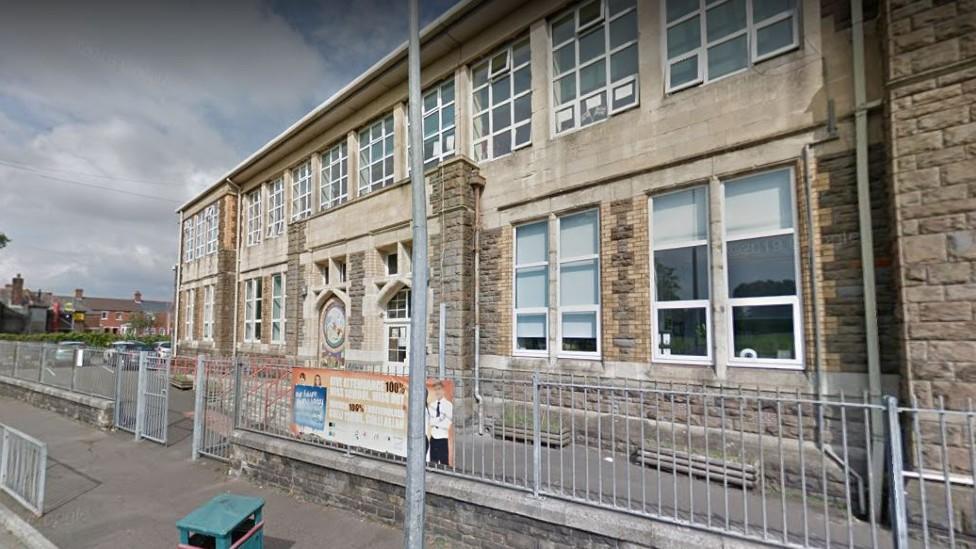
Children could go back one day a week in small groups, Moorland Primary head says
On Monday, thousands of primary school pupils in England walked through the doors for the first time since the coronavirus lockdown started in March.
But pupils and their parents in Wales are still waiting to hear what lies in store this side of the border.
Last week, the Welsh Government rejected an option to bring forward the start of the autumn term to August.
The other two choices are: Wait until September to restart, or reopen on either 22 or 29 June.
Education Minister Kirsty Williams is set to make a statement on Wednesday which may give parents in Wales the answer.
In England, reception, Year 1 and Year 6 have been the first groups to return, although some schools have not reopened and numbers varied from 40% to 70% attendance on the first day.
The only Welsh pupils who have seen the inside of a classroom have been children of key workers, or those deemed to be vulnerable, who have been attending school hubs to enable their parents to continue doing their vital jobs during lockdown.
For the teachers working in those settings, the experience has given an insight into how it might be best to manage greater pupil numbers - though there is general consensus that when doors do open, it will not be a return to schooling as normal.
'Social distancing is impossible with young children'
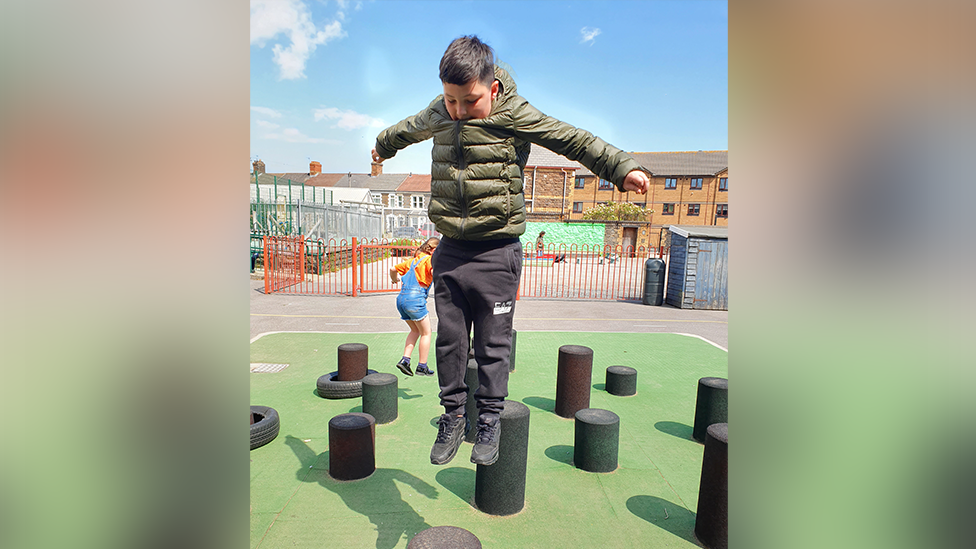
Pupils have learned to play at a distance at Moorland Primary hub
Head teacher Jane Jenkins, of Moorland Primary in Tremorfa, Cardiff, has seen from running it as a hub what could and what will not be possible when more pupils are re-admitted.
"At the moment, my thoughts are [on returning] at the beginning of July, increasing our provision and getting buildings up to scratch," she told BBC Wales.
"We're only taking the most vulnerable and key workers' children at the moment, but there is a level beyond that who are struggling and it would be good to extend that provision to [them].
"That would also be good in terms of re-introducing staff into the school. Clearly there are going to be fears among them.
"The one thing the hub has shown is social distancing is impossible with young children. Under the age of six, children don't have an understanding of it."
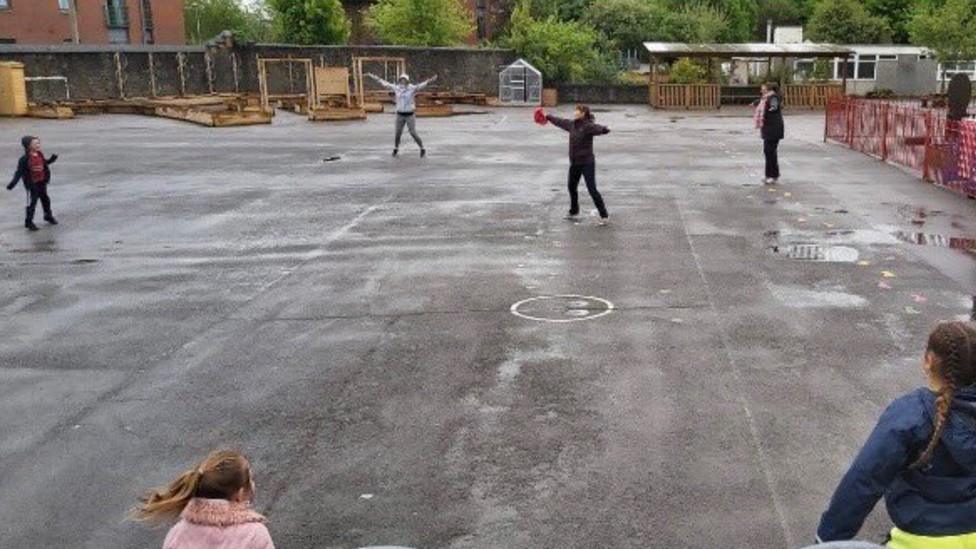
Children and staff playing together, but apart
But for Ms Jenkins, who is also chair of the Cardiff Primary Heads association, a July start for some re-opening would only be acceptable to her if the scientific evidence to do so is in place.
She has been reading everything that is published about how the virus behaves, keeping a close eye on the R number - the reproduction rate of the virus - and has worries that in areas which have reopened schools, the rate of infection seemed to have risen.
"I do feel like the Welsh Government are taking a very pragmatic approach to it, being guided by what's right for people rather than the economy," she said, but added: "It could be that what we're talking about is for September if everything goes pear shaped."
How could the new school days work?
Once the school is back in, she has a clear idea of how it should operate.
"One-quarter of the class every day Monday to Thursday, so one day in groups of six to eight pupils. The teacher would be able to teach them very intensively at that ratio and then set them up for the week with home learning," she explained.
She said having smaller groups would enable teachers to have much more targeted digital and remote learning for pupils to do while not in the classroom than is currently possible.
The school would close on Fridays for teachers to catch up with all their pupils remotely and for a deep clean of the school, she added.
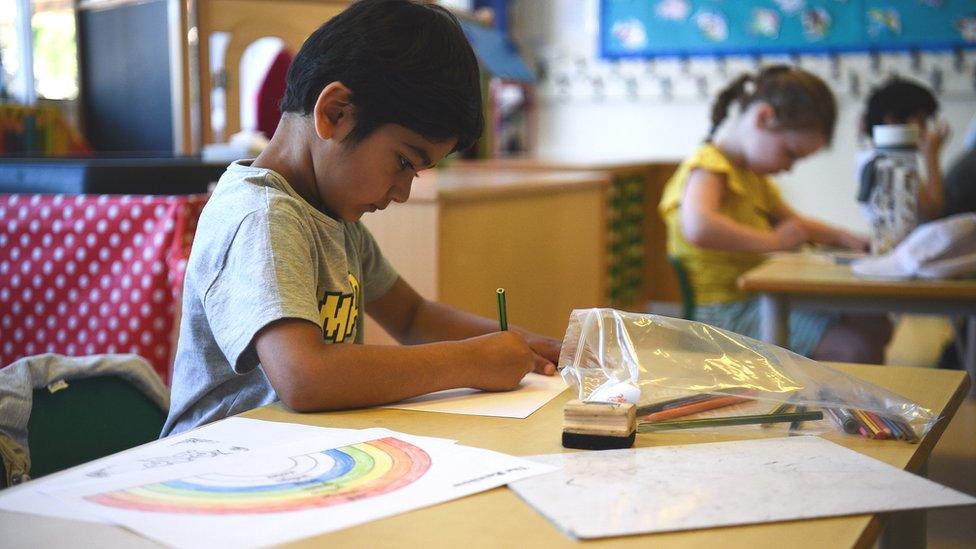
A child at an individual desk on the first day back at school in England
Each group would have a teaching assistant with them all day, through lunchtimes and playtimes, to help keep the children in their group only. The children would be given individual resource packs to use.
"There would be no whole school playtimes, assemblies, anything like that," she added.
However, she recognises that while she is happy the model might work "educationally and from a point of view of wellbeing", it would not be a solution for parents who needed to work.
It also means that while children would remain with their usual teacher, it would mean exposing the teacher to 30 different children over the course of the week.
"If it's six to eight at a time we can spread them out and limit contact," she said.
She is also looking at offering more provision on other days to groups of children who need more help, such as those with additional learning needs, with a different teacher in small groups, and seeing how key worker children can be accommodated.
Ms Jenkins said schools also have to consider if they could cope with such a model if they have staff members who are shielding or vulnerable, and how teachers who also have children would manage.
Should each school decide its own policy?
"There needs to be national advice to a degree but to some extent it will need to be school led because our buildings are different, our staff issues are different, but at the same time it can't be completely different," she said.
'September is the desired return date'
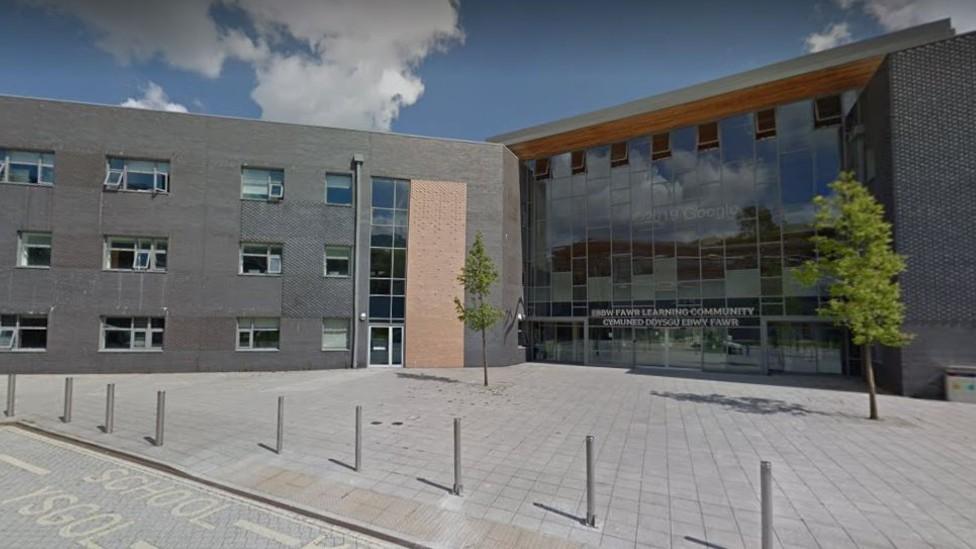
Ebbw Fawr Learning Community has had around 40 pupils at its hub
Up in Ebbw Vale, Hannah O'Neill has been working in Ebbw Fawr Learning Community, an all-through school which usually houses 1,100 pupils aged from three to 16.
Acting mainly as a hub for the area's primaries, it has had an average of 40 pupils a day during lockdown and has been working "extremely well".
Ms O'Neill, who is also district secretary for the National Education Union, says the main issue with distancing, as Jane Jenkins noted, has been with younger children.
"They need physical help with things like cutting up food or tying shoelaces.
"Staff with vulnerable family members have been working with older children to maintain strict social distancing," she explained.
"The children have been in the hub so long they know the drill. They know how to behave and how to maintain social distance from each other."
That said, she is glad Wales has not followed England's lead in returning to school yet, saying: "I wouldn't be happy with my daughter going back this week.
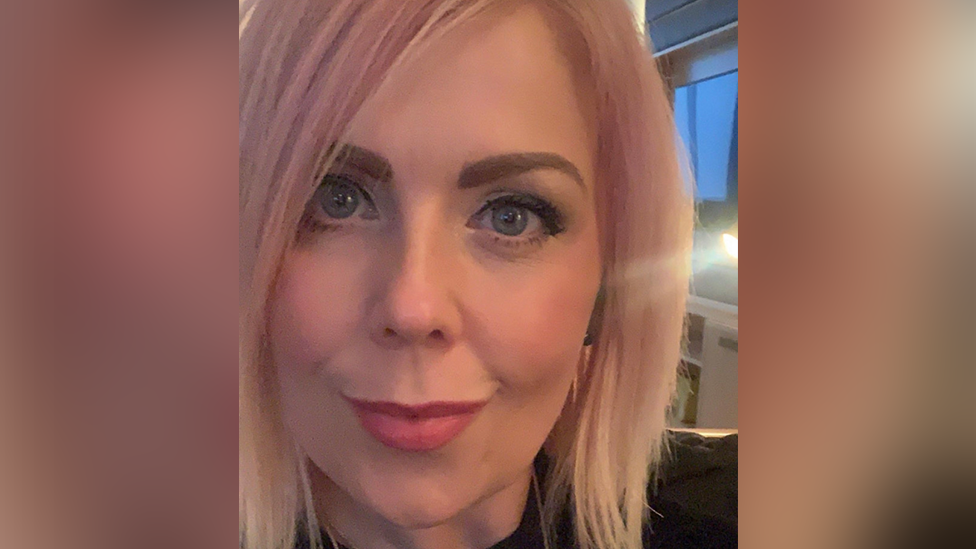
Hannah O'Neill says most teachers she has spoken to favour a September start
"I'm optimistic for [a return] towards the end of summer term [but] we have to see how many people catch coronavirus, and the R rate.
"I think September is the desired one for most of the teachers I work with."
Ms O'Neill said there were multiple considerations to be addressed in order to return pupils to school.
"We have got long corridors in our buildings, but we still can't have a two-metre space between children. We need to look at a number of different metrics," she said.
"People are working together exceptionally well to have a sense of normality.
"September.... gives us time to get it right, learn from England. There are so many key issues that we have to cover.
"We could have staggered [start] times, meal times - it's an opportunity to be more creative about it."
The NEU in Wales national secretary David Evans said Kirsty Williams' approach to reopening schools had been "sensible", adding: "We see the safety of staff and pupils alike as a top priority, and are waiting for the minister to make an announcement of the plans for wider opening when it is safe to do so."
What do parents think?
When asked the question "when do you think pupils should go back to school", parents commenting on a BBC story, external were overwhelmingly of the opinion that it should be "when it is safe", or September at the earliest.
One commented: "I think the earliest they should think about going back to school is September. I think it's silly trying to rush them back in and having to go on complete lockdown again."
But one mother, who did not want to be named, told BBC Wales: "I think the kids should go back as soon as possible because they are very low risk and need socialisation and routine.
"However, I don't think they should be going back to a completely sterile environment where they can't touch their friends or teachers."
- Published30 May 2020

- Published7 May 2020

- Published1 June 2020

- Published3 May 2020
